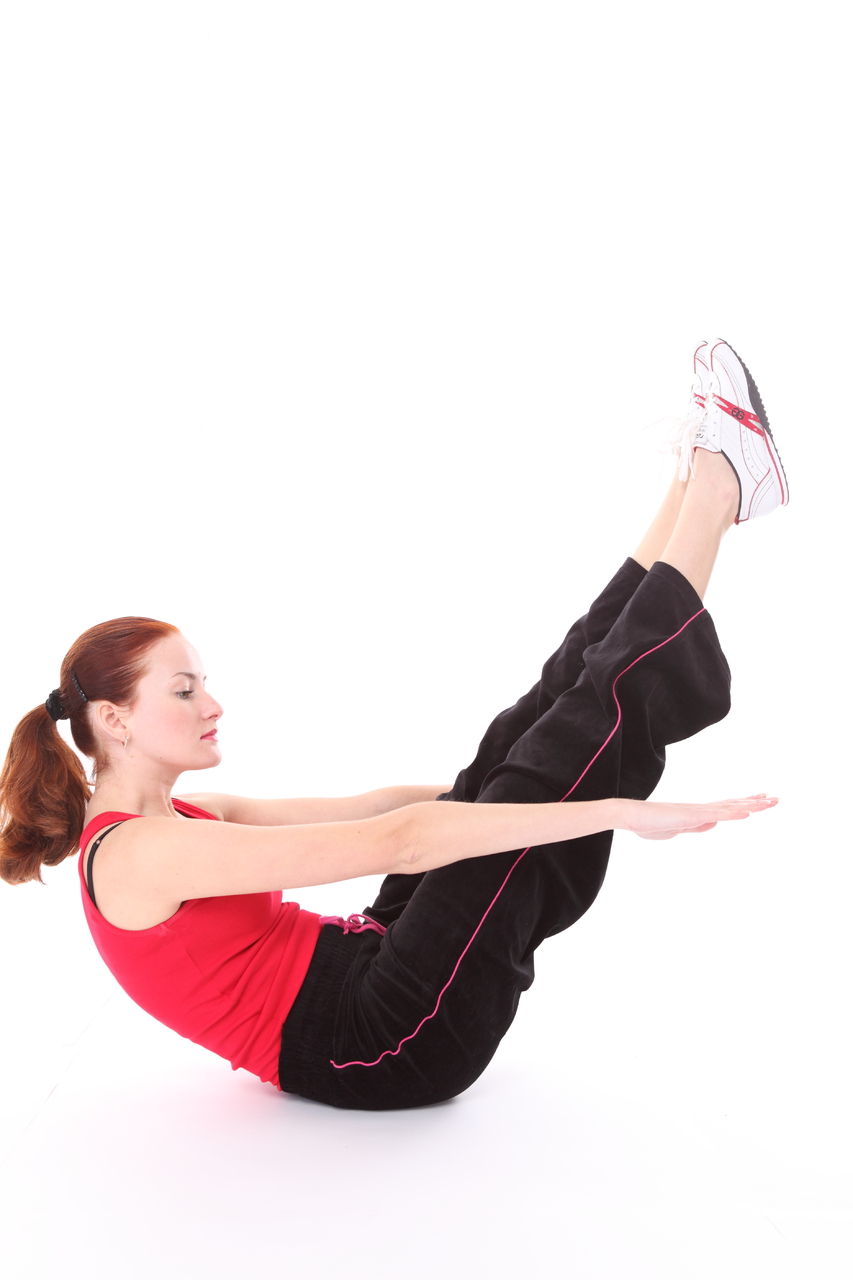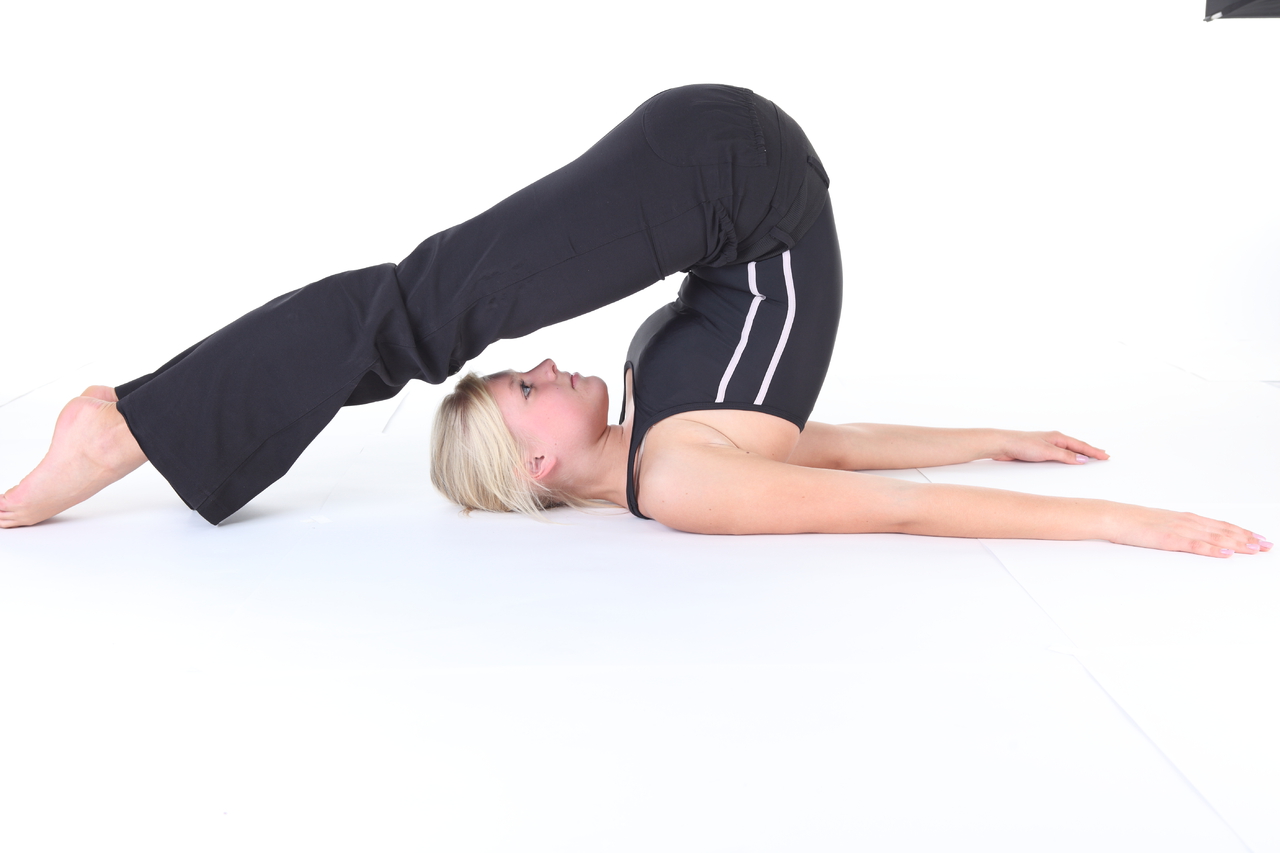Yoga pose: high plank
The high plank is a classic static asana yoga pose that works many muscles throughout the body. Some of the muscles engaged while you are holding this pose include your triceps and shoulders, abdominals (core), back, gluteal muscles and legs. It enhances balance and strengthens the hands and wrists. There are many variations and, beginners may lower their knees to the floor to take some of the weight off of the arms and other muscles. In full form, you should be almost in the starting position for a push-up, arms straight, weight balanced between hands and balls of your feet.
You can start on all fours. Keeping spine long and extend the sternum away from the navel. Keep lower spine straight and flat. Start by extending your legs back one at a time until you are in a straight line, facing the floor, balancing on your hands and the balls of your feet. Keep weight evenly distributed and keep hands in line with the shoulders. Engage your core to hold this position and don’t lock your arms at the elbows. You should feel many muscle groups engage. The longer you hold the position, the more your muscles will have to work to keep proper positioning. Start by holding for 30 seconds. If your form starts to slip, take a break.










